
Bible, History, Archaeology
Bible,
History,
Archaeology
Titus's bow,
the first jewish revolt
66-73 AD.
The Arch of Titus is a monument located on the Via Sacra, at the eastern end of the Roman Forum, on the Velia hill. It was erected in 81/82 by Emperor Domitian shortly after the death of his elder brother Titus, to commemorate the latter's victories, notably the siege of Jerusalem (70). The monument served as a model for many of the arches that followed.
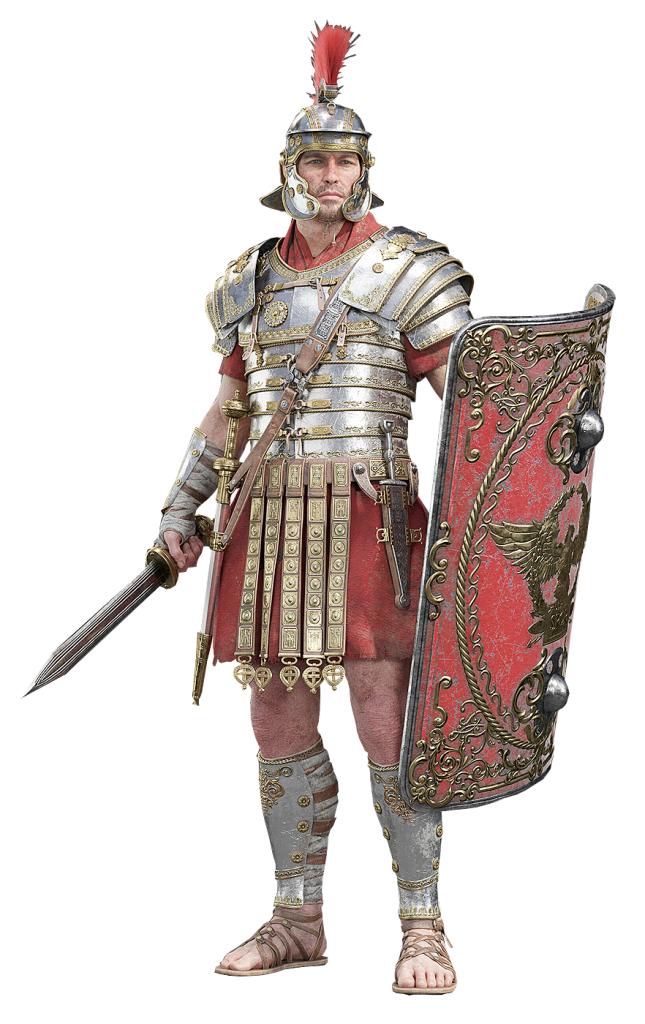 Introduction
Introduction
In 67, Vespasian received from Nero the imperial legation of Judea (governor or military representative of the emperor in the provinces) to quell, by any means necessary, the Judeo-Roman war that had broken out in August 66.
This uprising, which historians sometimes refer to as the First Jewish Revolt (66 to 73), arose from the successive blunders and corruptions of the various Roman procurators who, from 44 to 66, had been in charge of this territory under Rome's direct control since the year 6. The province covered Galilee, Samaria, Judea, Idumea and, beyond the Jordan, Perea.
Image opposite: 3d illustration of a 1st century AD Roman soldier © artstation.
In 66, the procurator Gessius Florus took 17 talents (1 silver talent = approx. 30 kg) from the treasury of the Temple in Jerusalem. This incident and, according to Flavius Josephus, the refusal of the priests to offer a sacrifice on behalf of the emperor, set off a chain reaction: revolts and reprisals soon led to war.
The Syrian governor Cestius Gallus (64-66) came to attack insurgent Jerusalem. He failed and, on his way back, his XIIth legion was ambushed near Beth-Horon. Fulminata ; he lost over five thousand legionnaires and almost four hundred cavalry.
The military campaign
Vespasian, accompanied by his son Titus, who had also acquired the title of legate in 67, began his war in Syria with three legions and the 12th legion stationed there (around 60,000 men with auxiliaries), then moved down to Galilee, where he received the surrender of the general of the Jewish troops in the region, Yossef ben Matityahou (Josephus, son of Mattatias), during the terrible siege of the citadel of Jotapata (spring 67). The latter rallied to the Roman cause and later took the gentilice of the Flavians in the form of Flavius Josephus (Titus Flavius Josephus). He left behind several historical, apologetic and autobiographical works that provide important information on the history of the Jewish people and the Flavians, with whom he ended his life in Rome around 100.
Image opposite: East view of the Arch of Titus in Rome's Forum © Cassius Ahenobarbus.

Vespasian temporarily ceased military operations on hearing of Nero's death (June 9, 68), and cautiously awaited developments.
In 69, during the civil war raging in Rome between four pretenders to the throne (the Year of the Four Emperors), Vespasian was acclaimed emperor (July 69) by the Eastern legions stationed in Egypt, then by those on the Danube.
Vespasian, in a hurry to gain recognition, left Judea for Rome to receive imperial investiture. Titus was entrusted with the task of completing the pacification and, above all, seizing Jerusalem, which fell in August 70 after a terrible siege. The famous Temple, enlarged and embellished by Herod the Great, and the city itself were completely destroyed, their treasures plundered and tens of thousands of Jews deported as slaves, delivered to the beasts or to gladiatorial combat in the circus games.
The revolt took a heavy toll. Almost a third of the Jewish population of Palestine (half according to other sources) was exterminated. Both the Roman historian and senator Tacitus and Flavius Josephus put the death toll at a very high 600,000.
 Image opposite: a copper prutah coin.
Image opposite: a copper prutah coin.
Judea - First Jewish Revolt - 67/68, Jerusalem.
Obverse: SHENAT SHAT'IM’. vase or ewer (object of worship). Year 2.
Reverse: HERTU Z'ION Freedom of Sion.
Marc Truschel, private collection. Courtesy of Marc Truschel.
The destruction of the «Second Temple» in 70 marked the beginning of a new exile. Judea became a separate Roman province from Syria, with its governor now in command of the 10th legion. Fretensis. The supreme authority of Judaism, the Sanhedrin, was dissolved. The Temple was destroyed, and national sacrificial worship ceased.
On his return to Rome in 71, Titus was in turn entitled to the triumphal ceremony, reinforcing the legitimacy of the new dynasty founded by Vespasian.
Some time later (81/82), Domitian, the last emperor of the Flavian dynasty (81-96), erected a «triumphal» arch in Rome's Forum to the glory of Titus.
The Flavian dynasty (69-96 CE). From left to right; the dynasty's founder, Vespasian (© shakko),
his eldest son Titus (© sailko) and his youngest son Domitian (© sailko).
A general view of part of Rome's Forum. The triumphal arch of Septimius Severus can be seen on the left,
erected in 203. © Luca Bellincioni.
Titus's bow
The significance of the bow is linked to an ancient religious practice concerning warfare: at the end of military campaigns, soldiers were made to pass under a «magic door» to discharge the destructive energies they carried within them and which represented a danger to the population.
These gates were located either at one of the city's entrances, or at the entrance to the Roman Forum. From the 2nd century B.C. onwards, some of them, the Fornices, These small arches tended to become triumphal monuments featuring images of victorious generals. As early as 27 B.C., generals and politicians commissioned this type of monument for propaganda purposes.
Rome boasted a large number of triumphal arches at the end of the 1st century, but most of these have now disappeared.

Image opposite: the inscription on the east side © DR.
The Arch of Titus is located on the Velia, at the end of the Roman Forum, near the Colosseum.
Strictly speaking, this arch is not a triumphal arch, but rather a consecration arch.. In fact, the text of the original inscription on the east side reads as follows:
SENATVS
POPULVSQUE ROMANVS
DIVO TITO DIVI VESPASIANI F(ILIO)
VESPASIANO AVGVSTO
«The Senate and people of Rome to the divine Titus Vespasian Augustus, son of the divine Vespasian.»
The mention of Titus deified on the arch means that the emperor was already dead when the inscription was engraved.
The original inscription allows us to positively identify the monument, which is virtually never mentioned in ancient literature, apart from a vague allusion by the Latin poet and author Martial (40-104).
Description
Architecturally, the design of the arch led to major innovations, such as the mastery of the semicircular arch, which we'll see again on bridges and Coliseums.
The single-bay, architecturally simple arch, on two piers (or pylons) but solidly structured, is punctuated by four plated columns, engaged on each face.
It is 13.50 m wide, 15.40 m high and 4.75 m deep.
On the keystones are depictions of Rome and the Genius of the Roman people, while above the archivolt are Victories flying on globes and holding standards.
The small frieze above (surviving only in the center of the eastern side) represented Titus' triumph over the Jews in 71, which the arch commemorates.
The two major episodes of this triumph are depicted on two large reliefs facing each other inside the 8.30-meter-high by 5.36-meter-wide arched bay.
The first large relief
Located to the south, it depicts a procession marching under the triumphal gate: the latter, surmounted by two quadrigas, is on the right; the bearers of the stretchers (fercula) on which the spoils are laid out, march from left to right: the objects carried are silver trumpets, the table of showbread and the seven-branched candelabrum (menorah), one of the earliest representations of which is shown here (Flavius Josephus' trident-like description of the menorah does not correspond to the representation on Titus' arch), taken from the Temple of Jerusalem; the placards were probably painted with the names of the conquered cities.
According to Flavius Josephus, «the last piece of booty was a copy of the Law of the Jews...» (Jewish War, Book VII, 148-152).
The reliefs on the Arch of Titus are considered characteristic of the artist's search for movement in space. The panel depicting the Emperor's chariot triumphing over the Jews is composed in such a way as to give the impression that the procession emerges from the bottom of the panel on the right, moves towards the viewer and then returns to the left. The idea is to transpose a painting technique into relief.
The first large relief. On one of the two inner arches, the relief panel, in its current state, depicts the procession of several elements of Jerusalem's «Second Temple». Cassius Ahenobarbus.
The second great relief
Located on the north side opposite the first, it depicts the central episode of the triumph: Titus advances on his quadriga, preceded by lictors whose beams stand out against the background with varying inclinations; the goddess Rome in person holds the horses by the bit, while Victory, standing on the chariot, crowns the emperor; the allegories of the Roman People and Senate follow: the first is a young man with a naked torso, the second is in a toga.
In the richly carved vault, Titus is represented again, this time riding an eagle that carries him up to heaven: this representation is to be linked to the divinization and apotheosis after his death. As in the case of the Trajan column, this scene has led us to believe that the arch may also have been Titus' tomb, whose body was laid to rest in the room that opens onto the interior of the attic, until his ashes were transferred in '94 to the temple of the gens Flavia on Mount Quirinal, the highest hill in the Forum.
The second large relief: the triumph of Titus on the north pillar © Cassius Ahenobarbus.
 A project supported by Yeshiva University
A project supported by Yeshiva University
In 2012, scaffolding was erected in the bay. The first step was to use high-definition sensors to scan the relief on the south side, showing the procession of booty taken from the Jerusalem Sanctuary. The highly accurate three-dimensional scan, carried out by Unocal srl Tecnology and Innovation, reveals such fine details as the laurel wreaths encircling the foreheads of those displaying the booty.
Image opposite: Italian company Unocal srl Tecnology and Innovation performs a 3D digital scan of the relief of the parade of objects from the Second Temple built by Herod the Great. Steven Fine.
Next, two German experts in antique polychromy pass the menorah under the light beams of an ultraviolet-visible spectrophotometer (UV-VIS), capable of measuring the wavelengths emitted in return.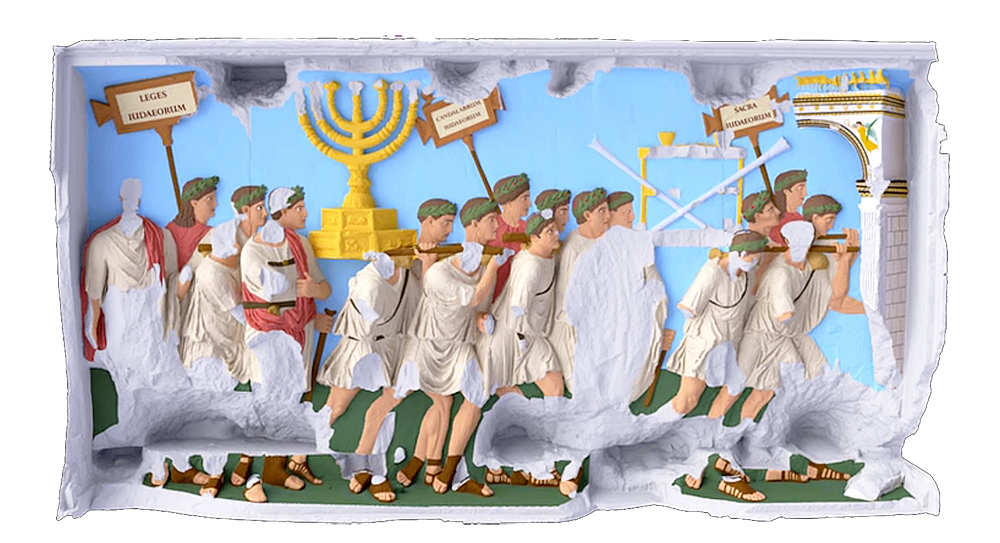
Image opposite: after 3D digital scanning, a proposal of the original colors using a polarized light microscope, X-ray fluorescence spectrometry in the smallest folds of the relief. Institute for the Visualization of History.
Conclusion
Just over half a century after this first revolt, the Jews rose up a second time, only to be defeated once again (the Bar-Kokhba revolt). This time, Rome did away with the name of the country, Judea, and replaced it with that of Syria-Palaestina (Syria-Palestine). The ancient designation of the territory of the Philistines replaces the reference to the land of the Jews (Ioudaioi). At the same time, a Roman colony, Aelia Capitolina, was built on the ruins of Jerusalem, the Holy City for the Jews, thus forbidding them to enter.
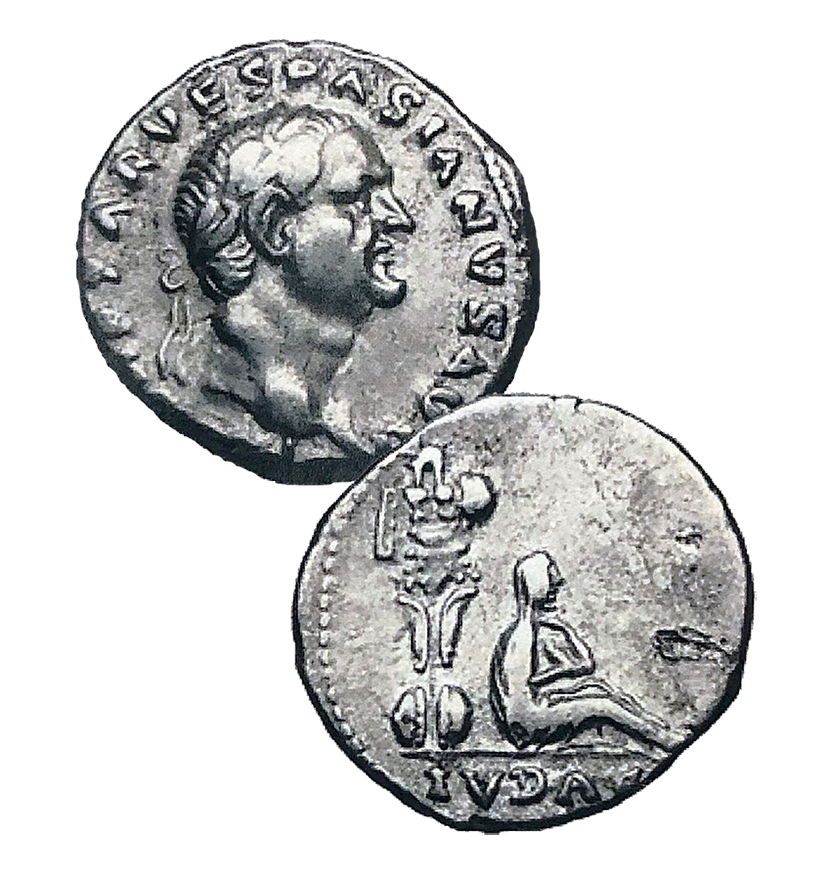
Denier IVDAEA CAPTA – Captive Judea,
in the effigy of Vespasian to celebrate his victory in Judea.
Obverse:
IMP CAESAR VESPASIANVS AVG
Revers :
IVDAEA
Judea [capta]
Private collection. Jean-Guy Kauffmann, with kind permission.




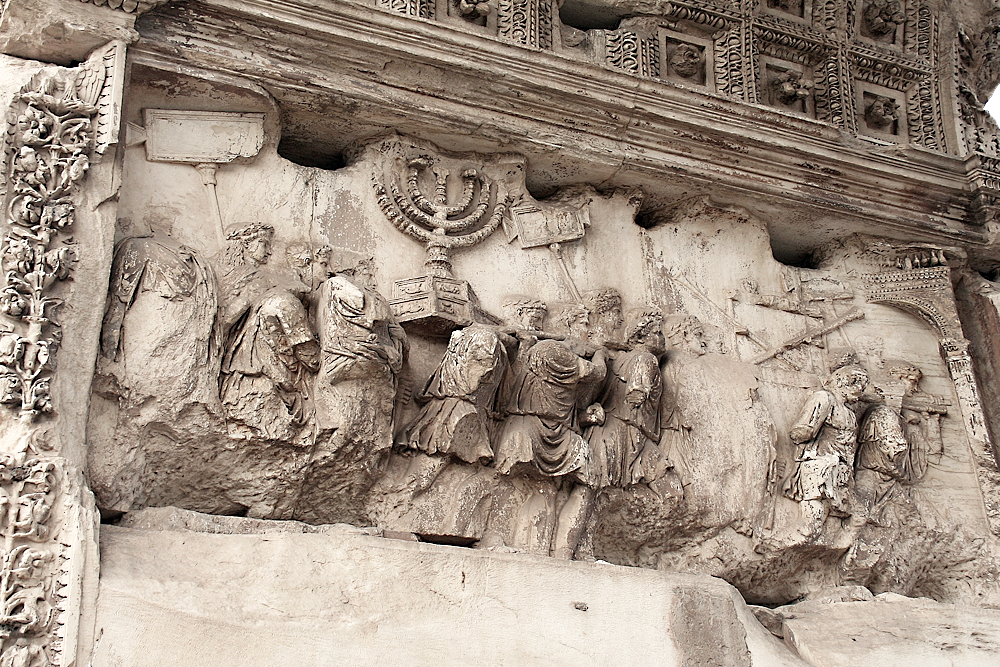
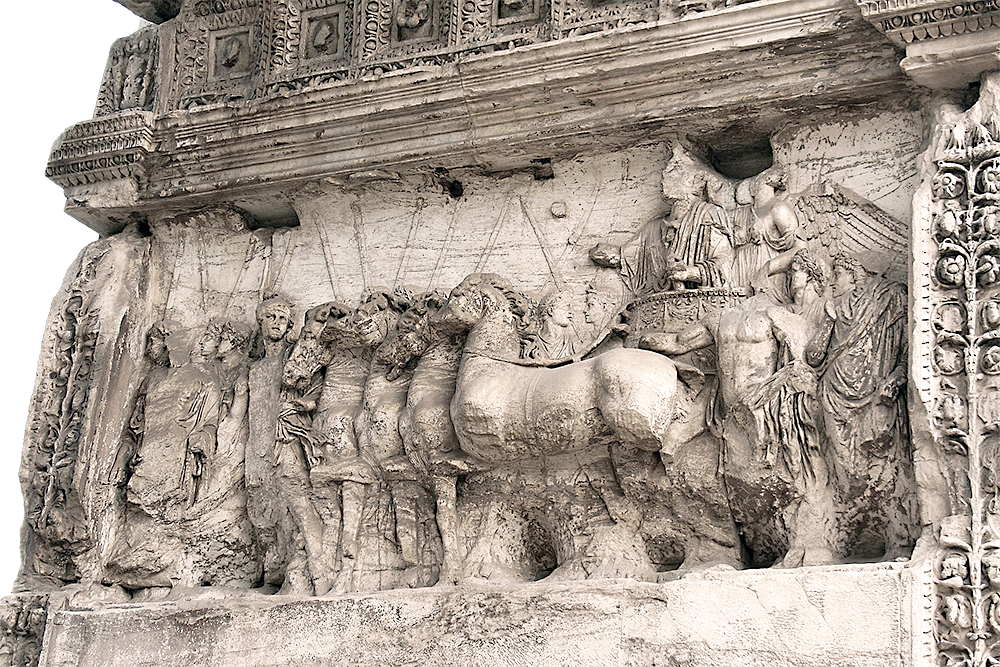
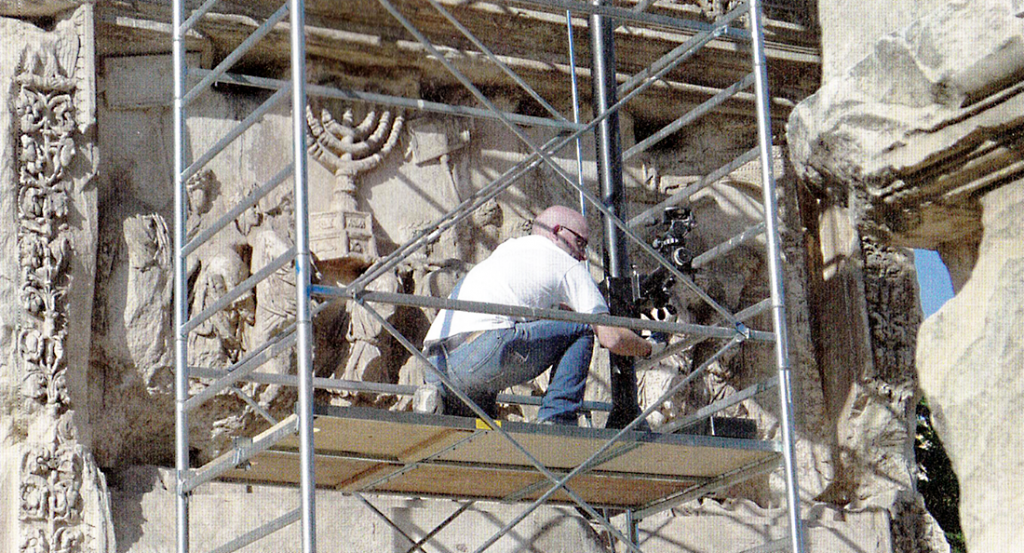 A project supported by Yeshiva University
A project supported by Yeshiva University